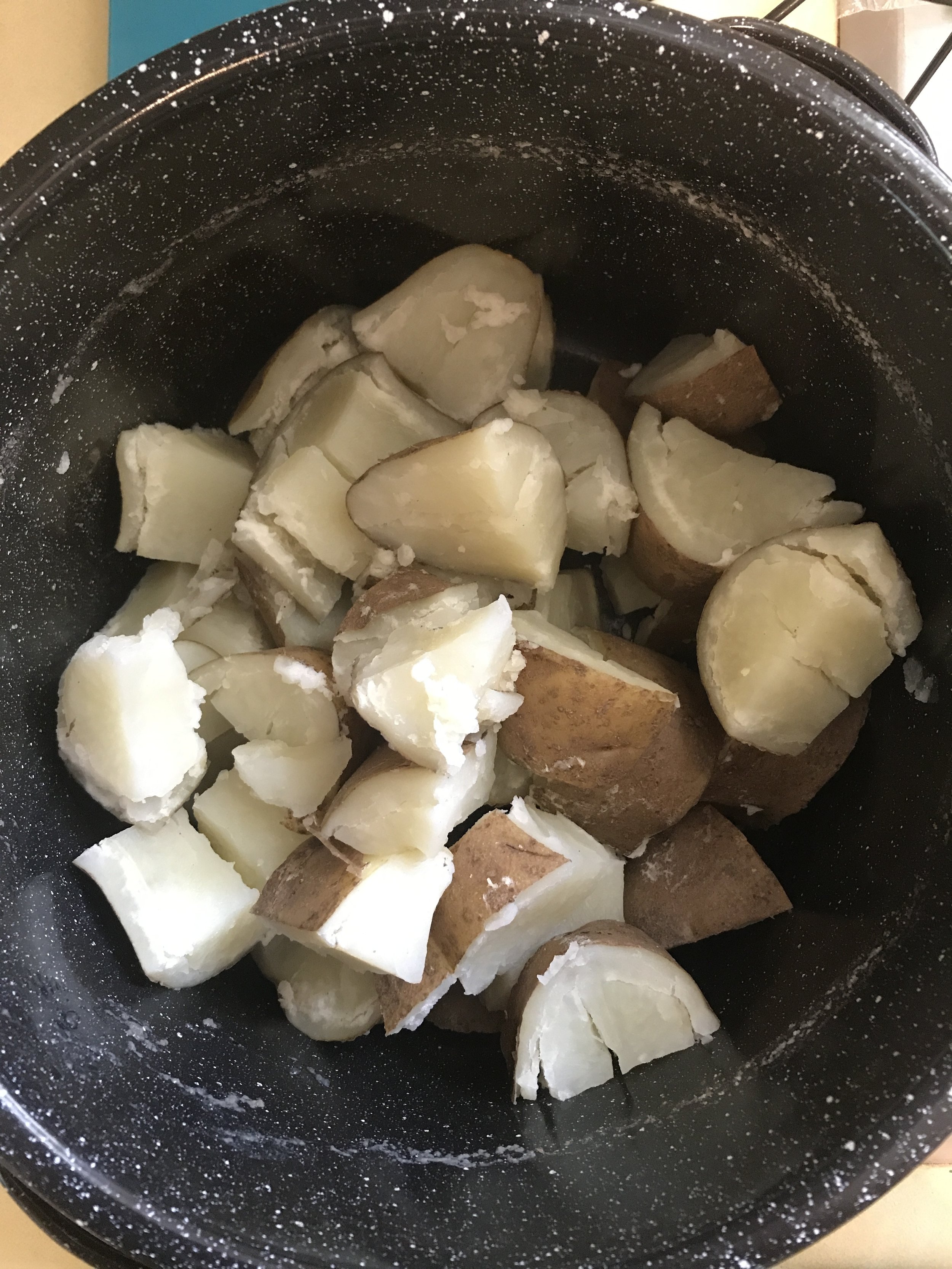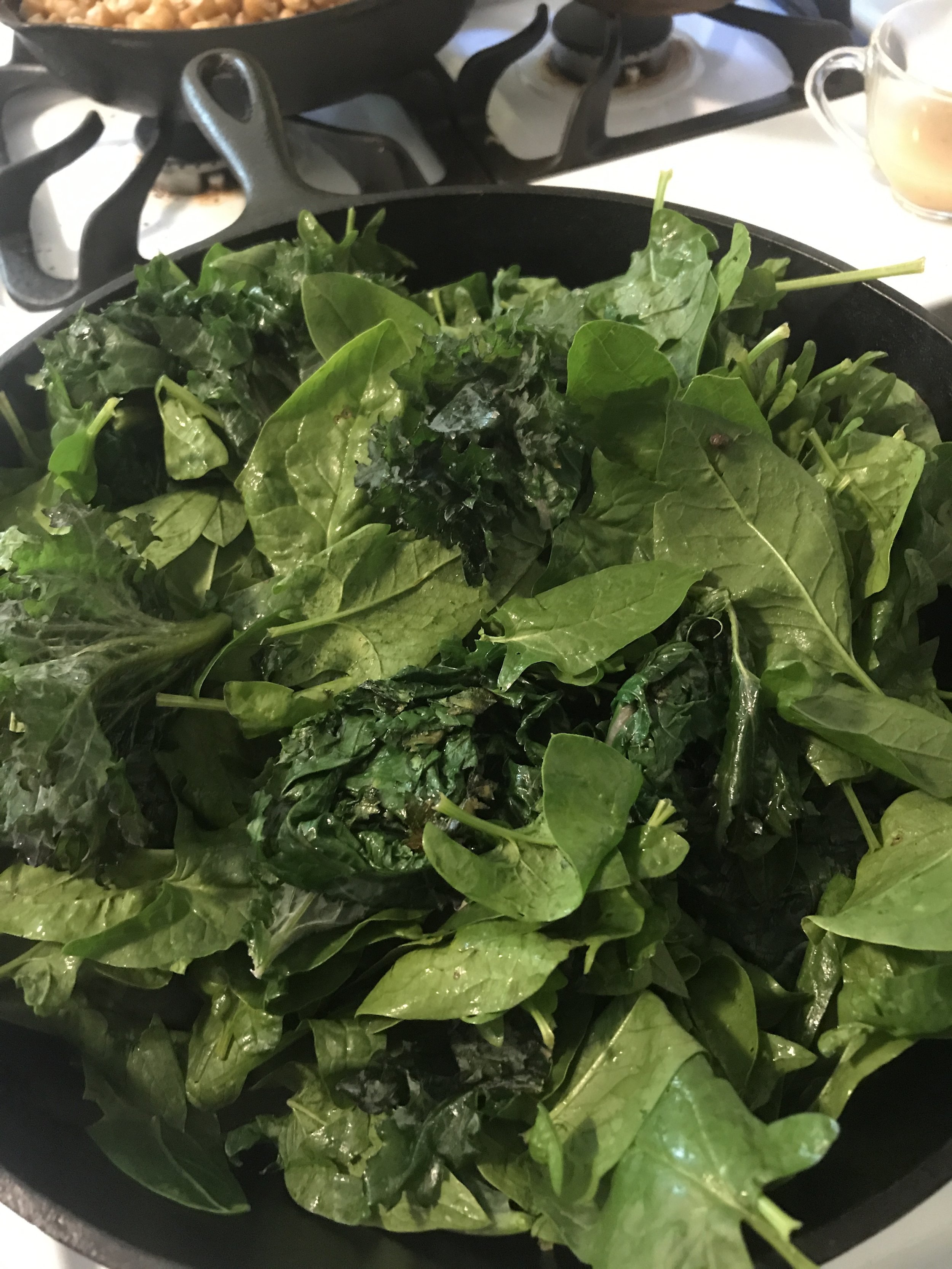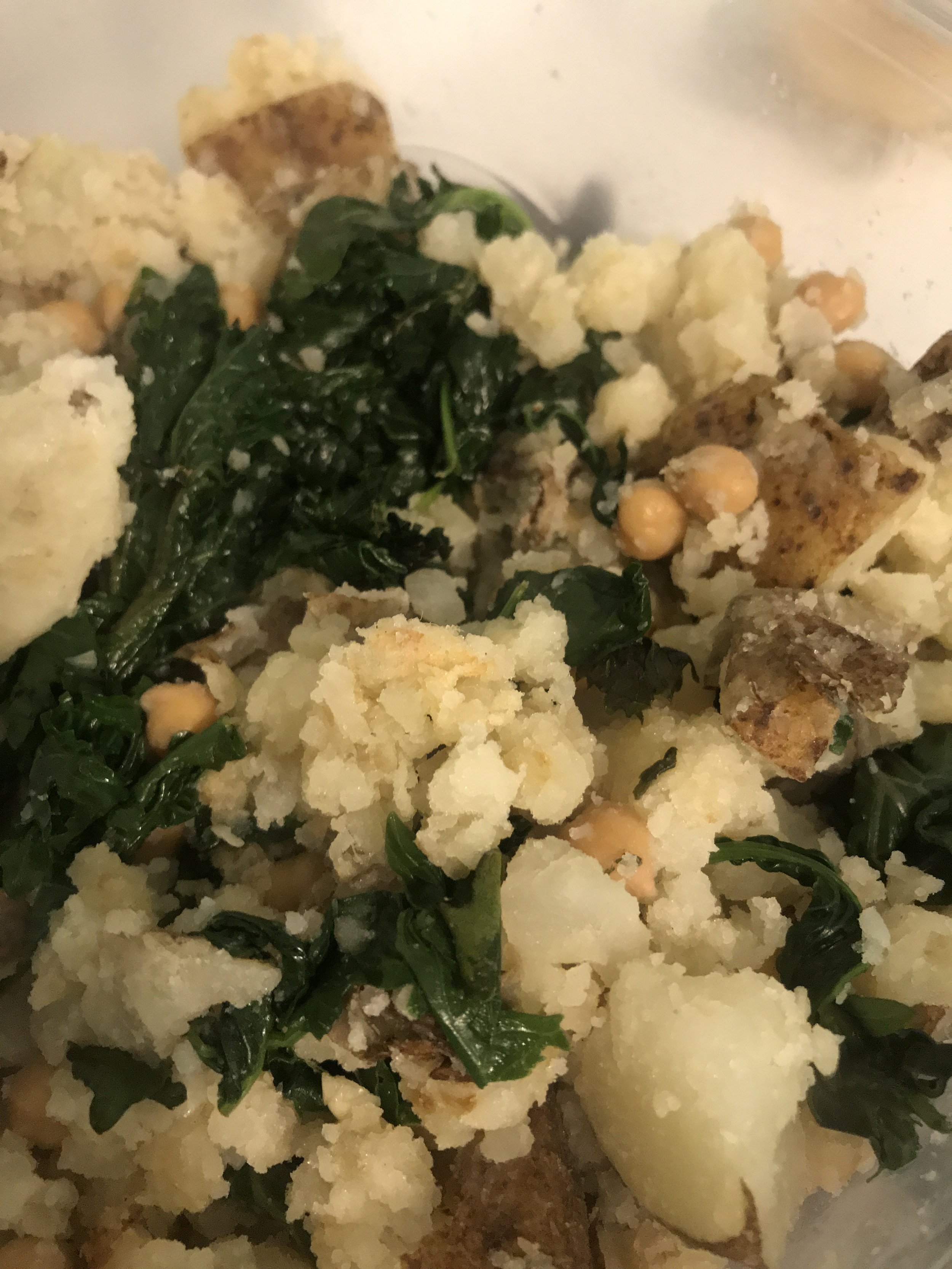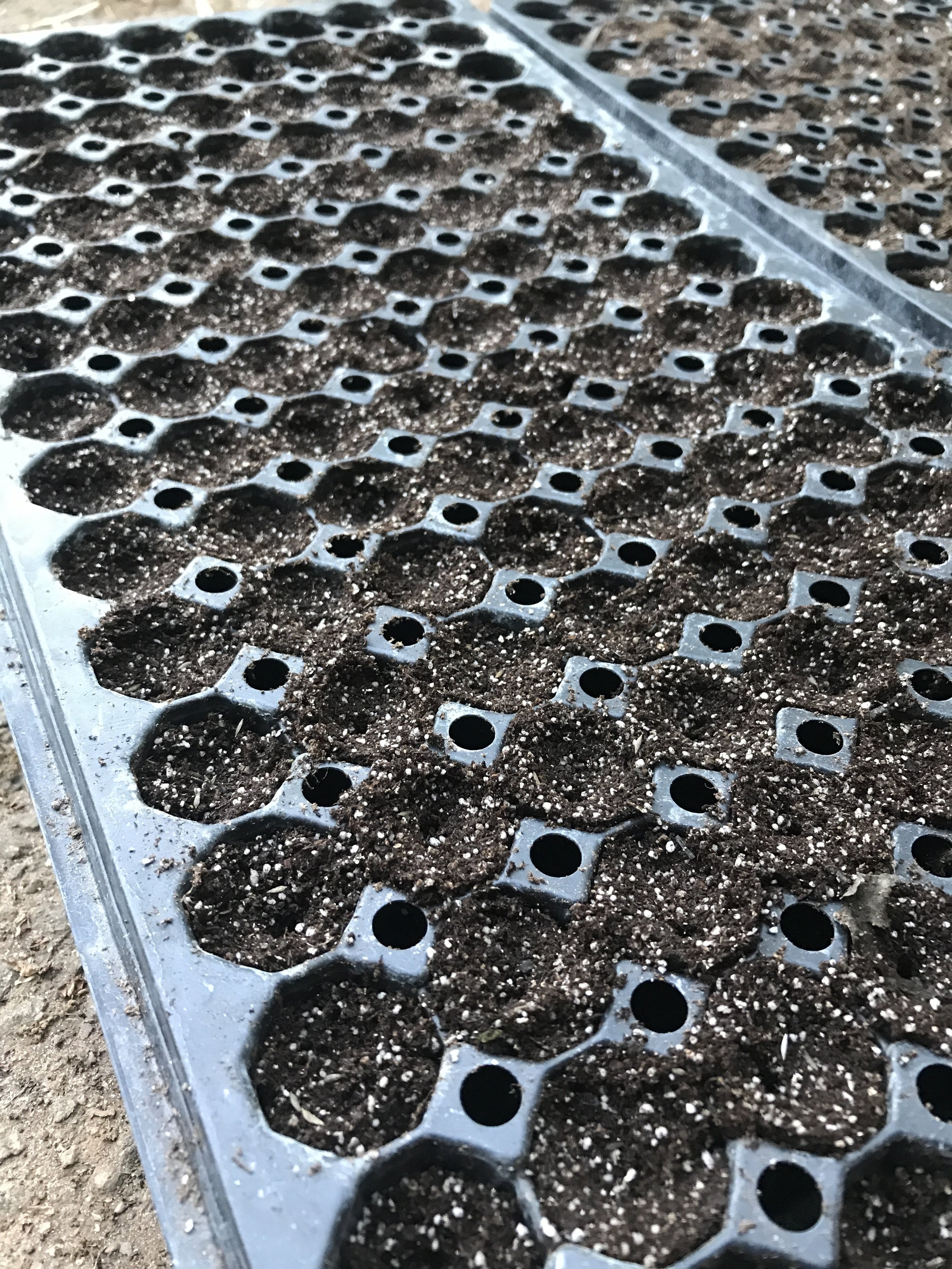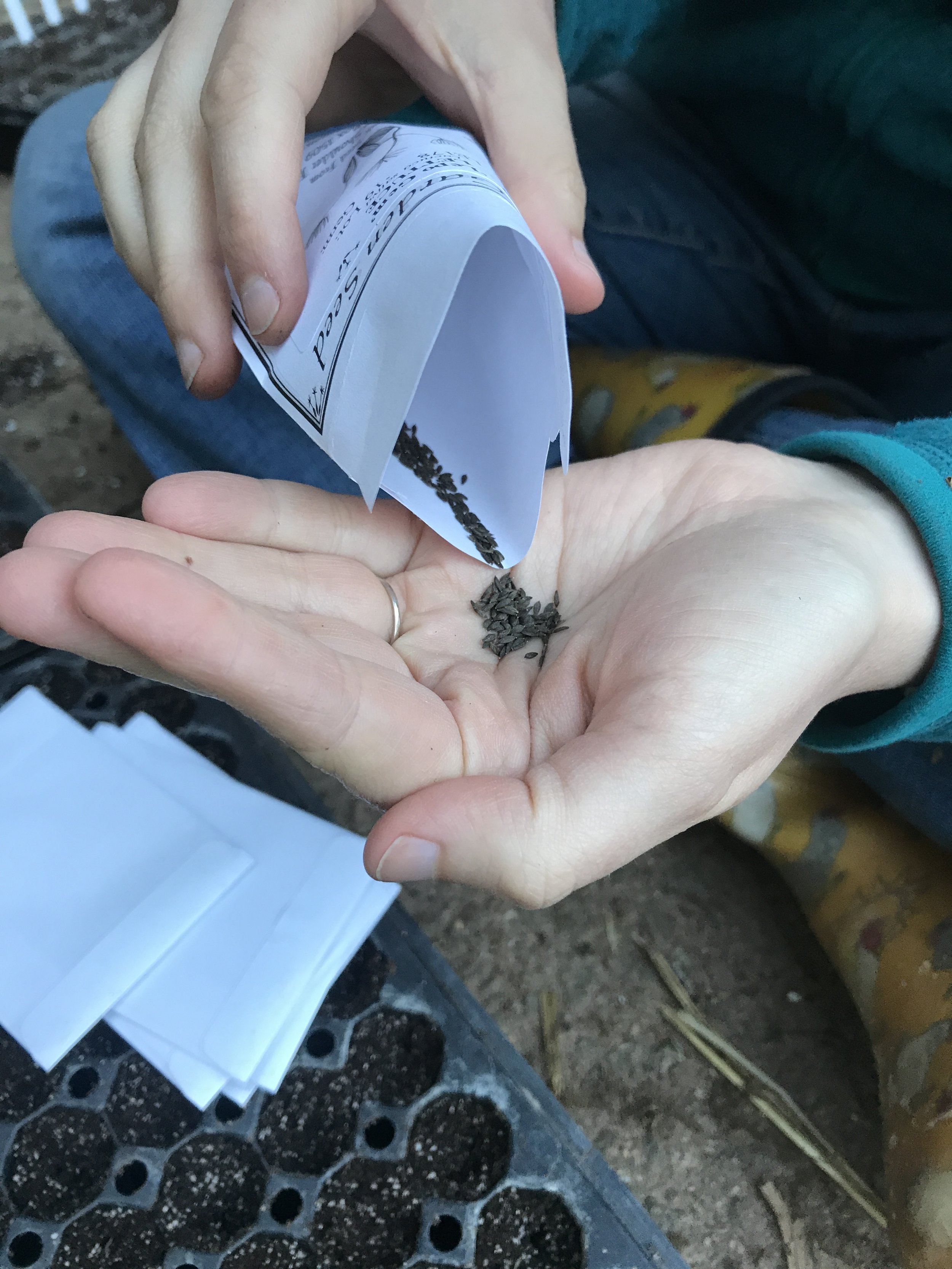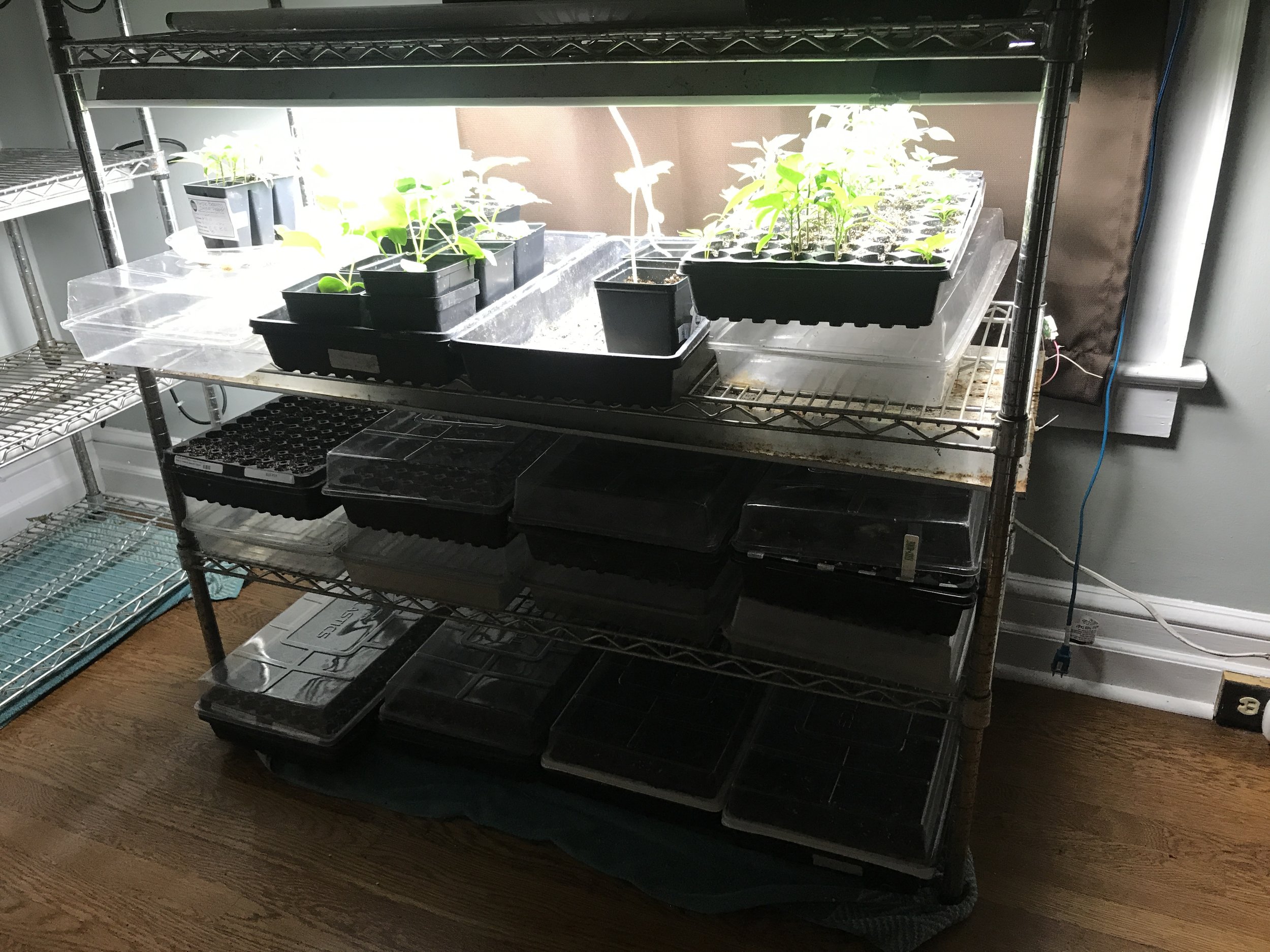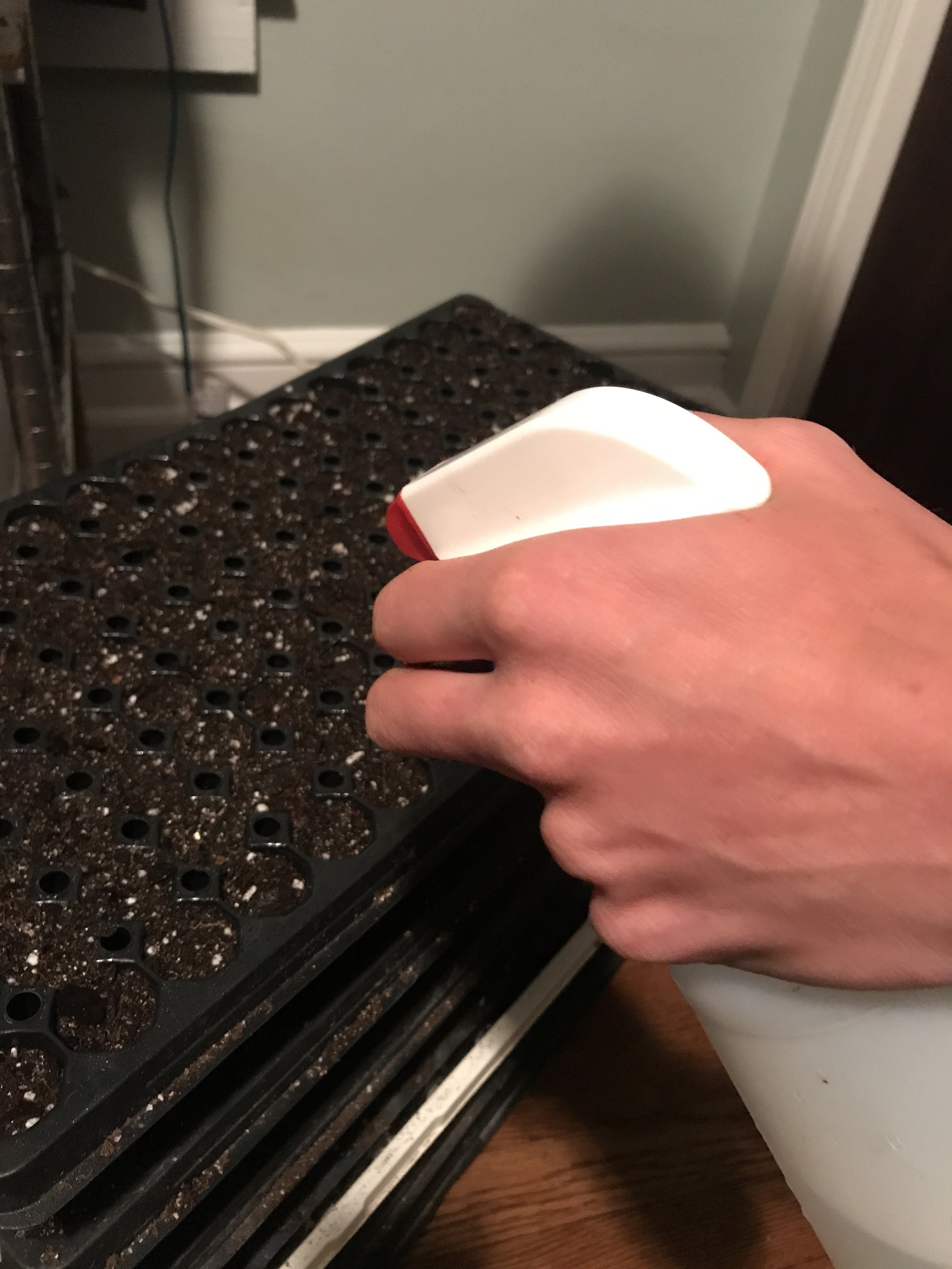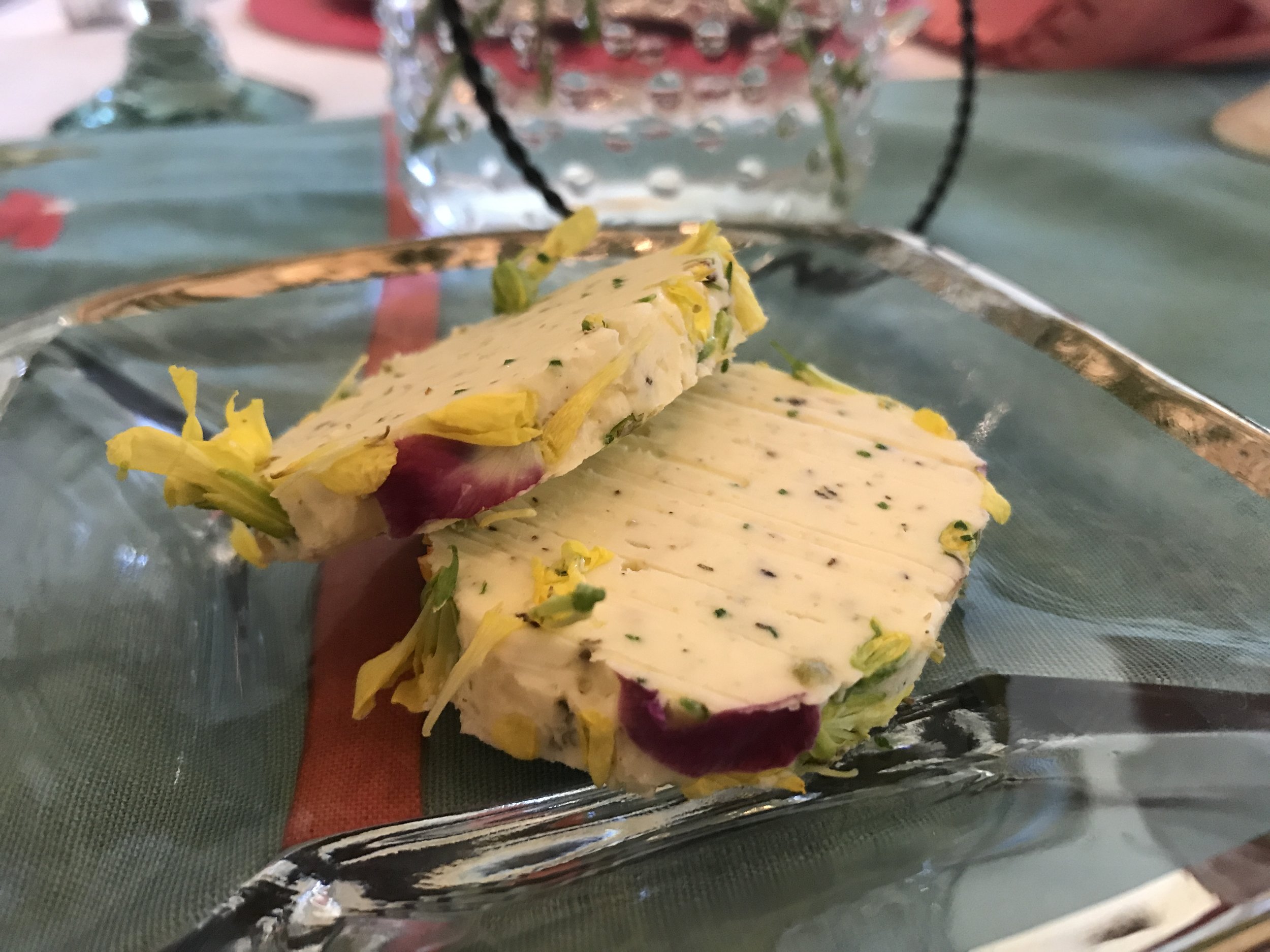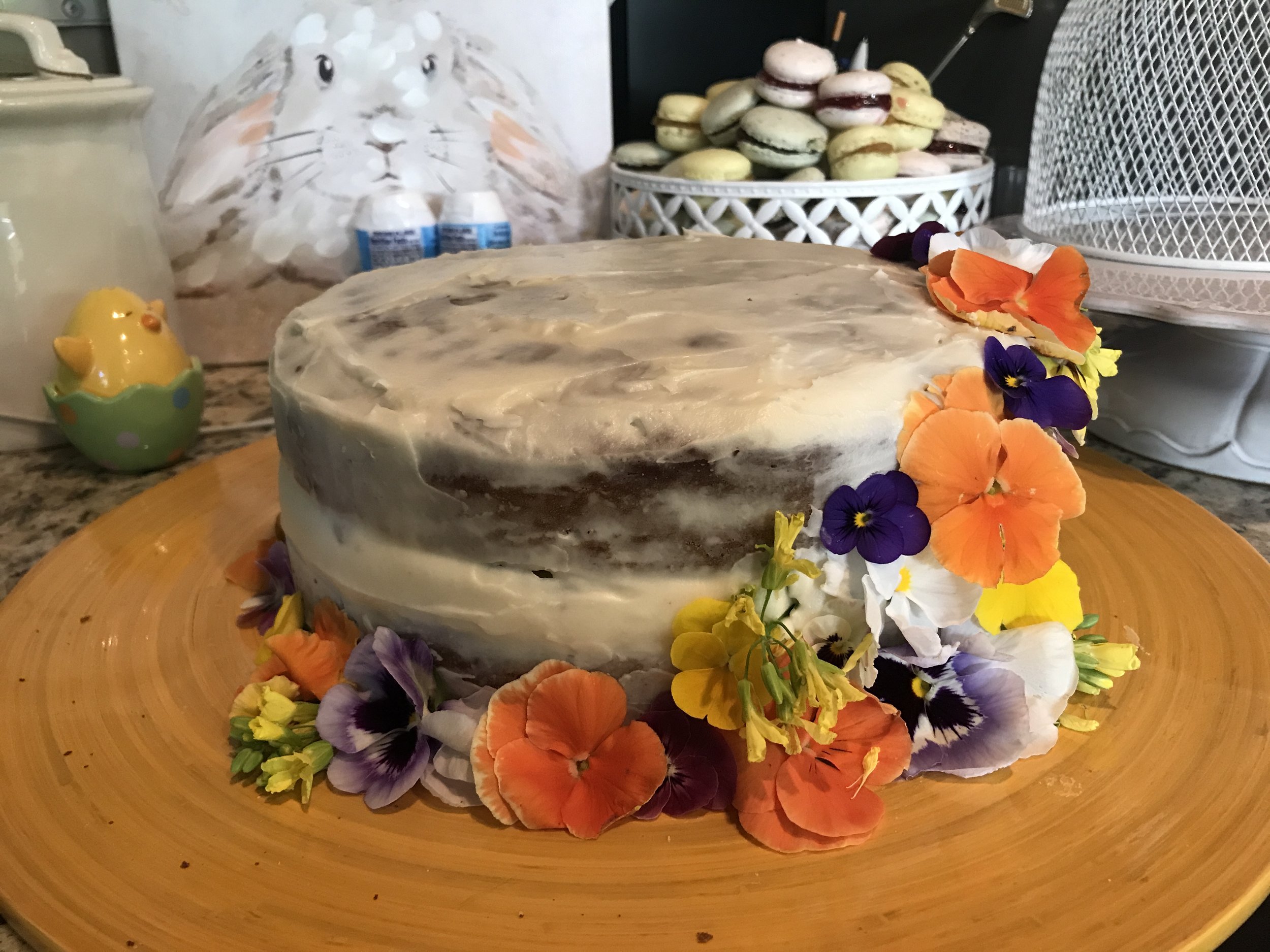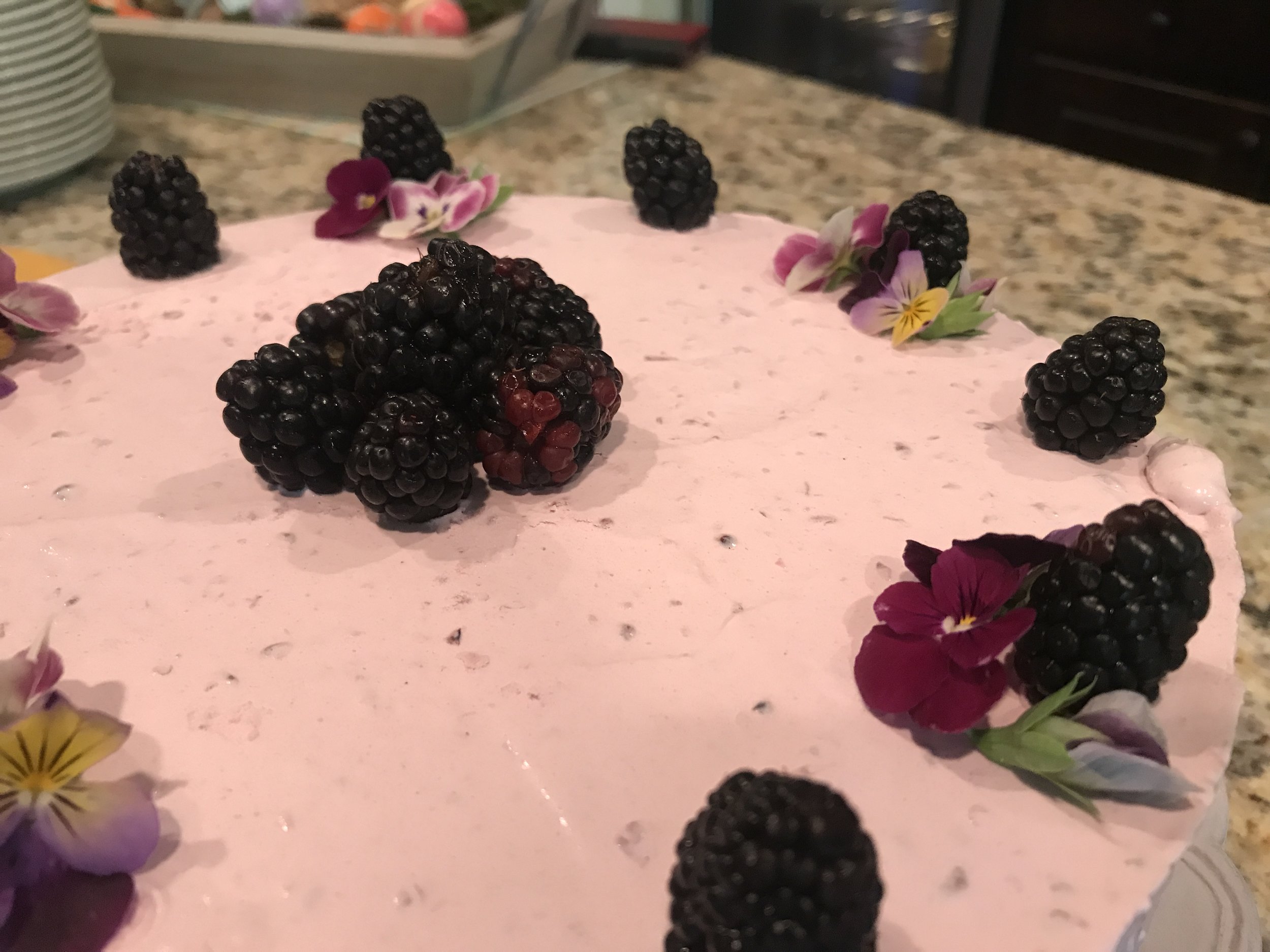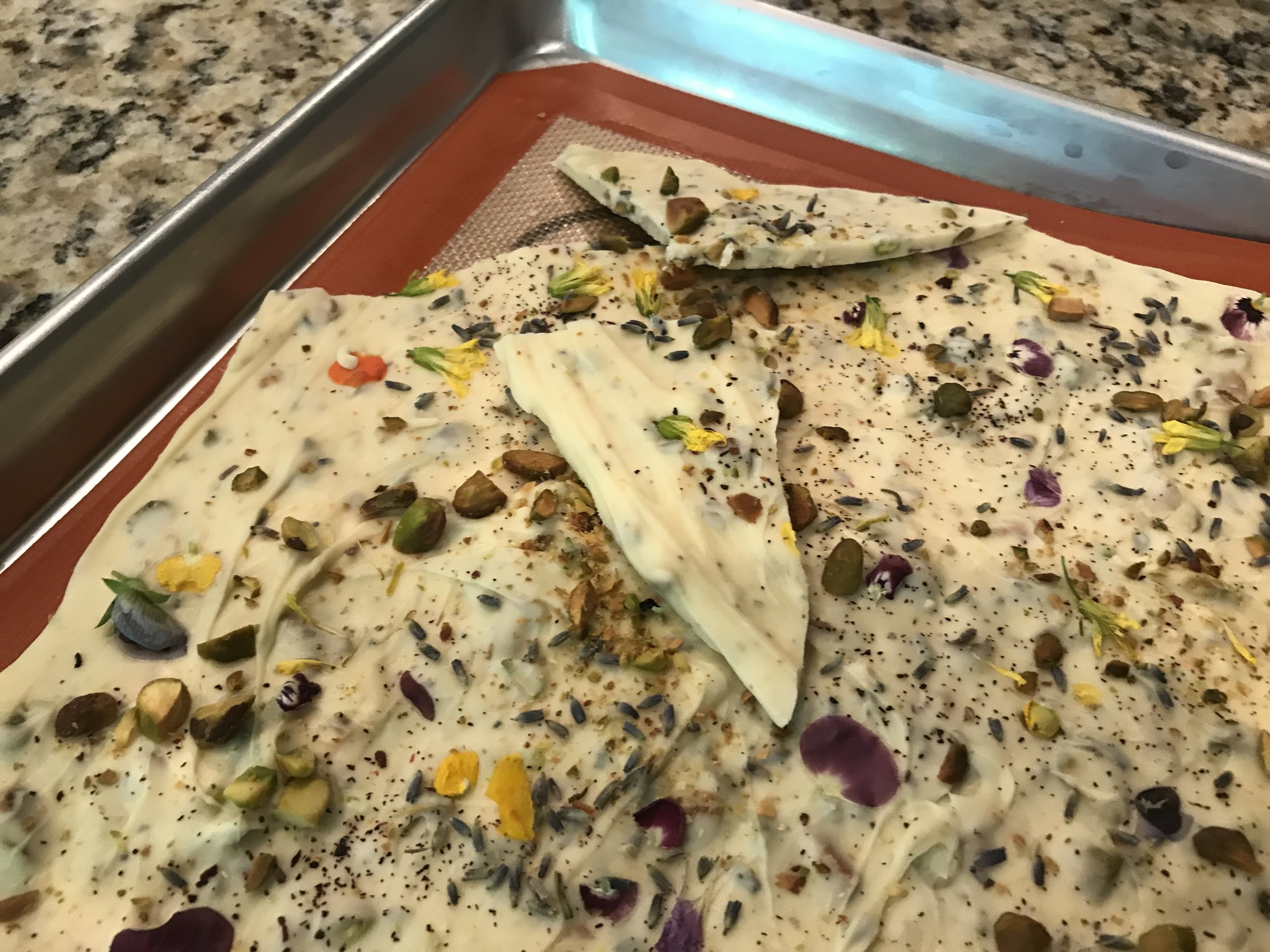An abundance of spring greens has us looking for clever ways to mix them into our weekday menus. We found this recipe in Simple Green Suppers. While the original recipe found a way to make it fit mostly in one skillet, we found that we had to use to use two skillets the second time we tried this hash. Probably a side effect of doubling the original recipe to have yummy leftovers. Farmer Nathan’s wife also loves russet potatoes most of all, so they modified slightly to include them.
Ingredients
20 ounces (Approx.) russet potatoes, cut into large chunks (baby potatoes work too!)
1.5 TBS salt
6 TBS butter or olive oil
2 - 15oz cans chickpeas (rinsed and drained)
2 ½ TBS minced garlic
6 cups chopped/shredded spring greens (chard, kale, wild spinach, etc.)
Salt and pepper to taste
White wine vinegar
Sour Cream
Instructions
Put potato chunks in a large pot, add 1.5 TBS salt and cover with water. Bring to a boil then reduce to a simmer until tender enough to poke with fork (about 30 minutes).
Melt 4 TBS butter in large skillet over medium heat. Add chickpeas and roast them stirring frequently till they are golden brown (about 7 minutes). Add in the minced garlic and stir until fragrant.
Add the spring greens and ½ tsp salt and toss until the greens are wilted.
Moved mixture to side of pan (or use another skillet if yours is as small as ours), melt the remaining butter and add the boiled potatoes. Using a masher or spatula, crush the potatoes, but don’t entirely mash them. Salt and pepper to taste.
Turn up to medium-high and mix all components together. Press down occasionally to brown some bits. About 3 minutes for each side of the hash.
Plate your hash and drizzle with white wine vinegar and a dollop of sour cream (optional)



